Most artists struggle with capturing the subtle distinction of the human mouth. They spend hours trying to perfect their lips but still end up with flat, unrealistic results that lack depth and expression.
But what if they could learn to draw realistic mouths with simple techniques that anyone can master? The good news is that creating lifelike lips isn’t as difficult as many believe.
This blog breaks down the process into manageable steps. Readers will learn proper proportions, shading methods, and texture techniques that bring mouths to life on paper.
They’ll find out how to draw a realistic mouth through practical examples and clear instructions.
By the end, even beginners will feel confident tackling this challenging facial feature and adding genuine expression to their portraits.
Essential Drawing Tips for Sketching a Realistic Mouth
Want to improve your mouth drawings? Here are some simple but powerful tips to help you learn how to draw a realistic mouth with confidence.
- Start with Light Guidelines –Use soft pencil strokes to sketch the basic mouth shape. Light lines help you adjust proportions easily while learning to draw realistic mouths.
- Understand Lip Anatomy – Notice that the upper lip usually has a sharper edge, and the lower lip is fuller. Knowing these small differences improves realism.
- Focus on Proportions – The corners of the mouth often line up with the pupils. Keeping this in mind helps with correct placement.
- Add Natural Curves – Avoid straight lines. Mouths have gentle curves that give them a soft, natural look.
- Use References Often – Study real mouths in photos or mirrors. It’s one of the best ways to learn to draw realistic mouths more accurately.
- Build Layers with Shading – Shade lightly first, then slowly darken key areas like the corners and under the bottom lip for depth.
- Highlight for Realism – Use an eraser to lift out soft highlights on the lips. This gives a natural, slightly glossy finish.
- Practice Different Expressions – Drawing smiles, frowns, or neutral lips helps you learn how the mouth changes with emotion.
Step-by-Step Guide: How to Draw a Realistic Mouth from Scratch
Drawing a realistic mouth might seem challenging at first, but with the right approach and a bit of practice, it becomes an enjoyable process.
The mouth is a key feature that adds emotion and expression to any portrait. Even if you’re new to drawing or brushing up on your skills, this step-by-step guide will help you understand proportions, shape, and subtle details to create lifelike mouth drawings.
1. Begin with a Gentle Outline

When learning to draw the realistic mouth, start with a soft pencil outline light enough to guide your work but easy to adjust.
Avoid hard outer lines unless you’re drawing heavy lipstick. A feathered, sketchy edge creates a lifelike softness. Erasing any harsh borders before shading ensures your mouth blends naturally into the face’s skin tone.
2. Understand the Role of Contrast
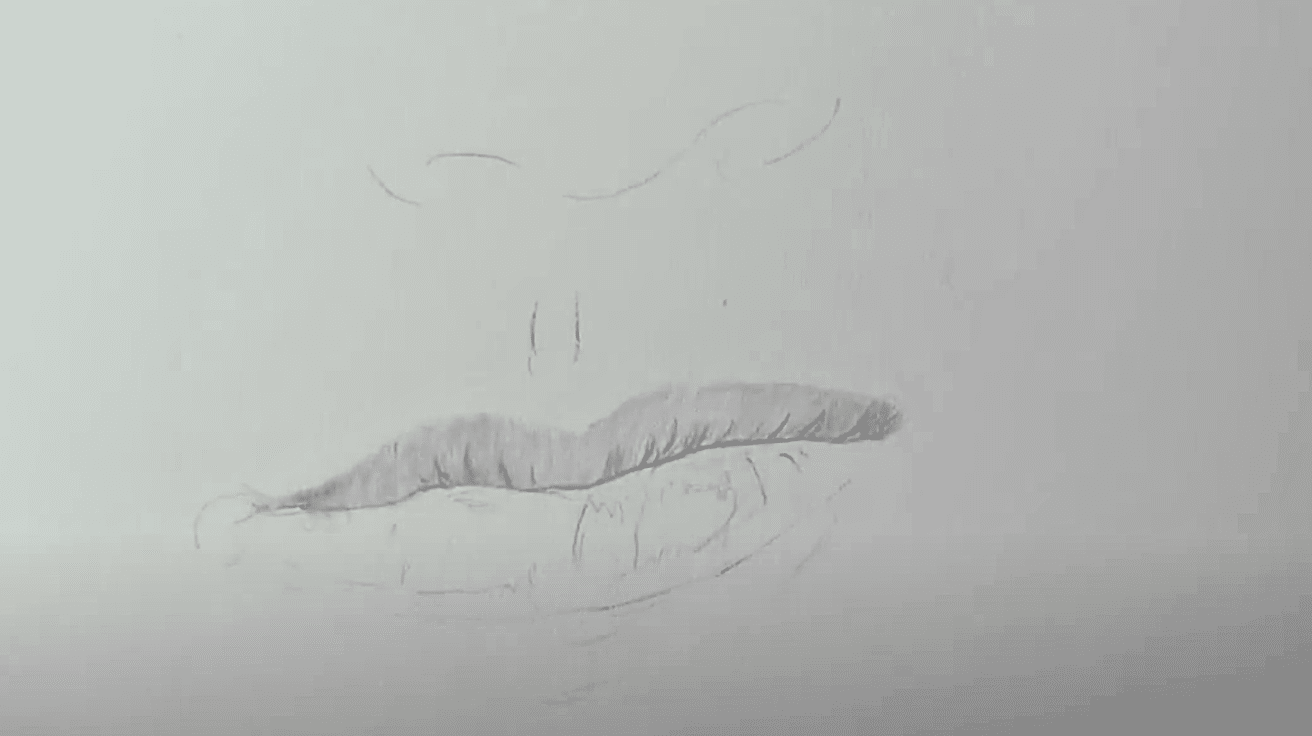
When examining drawing realistic mouth, it’s important to approach contrast with care and intention.
- The lips should be just a few shades darker than the surrounding facial skin.
- Overly dark lips, especially on men or children, can make them look overly made-up.
- Save the strongest contrast for the crease between the lips.
Gently shifting tones give a lifelike look without creating an artificial or overly stylized effect.
3. Focus on the Center Crease
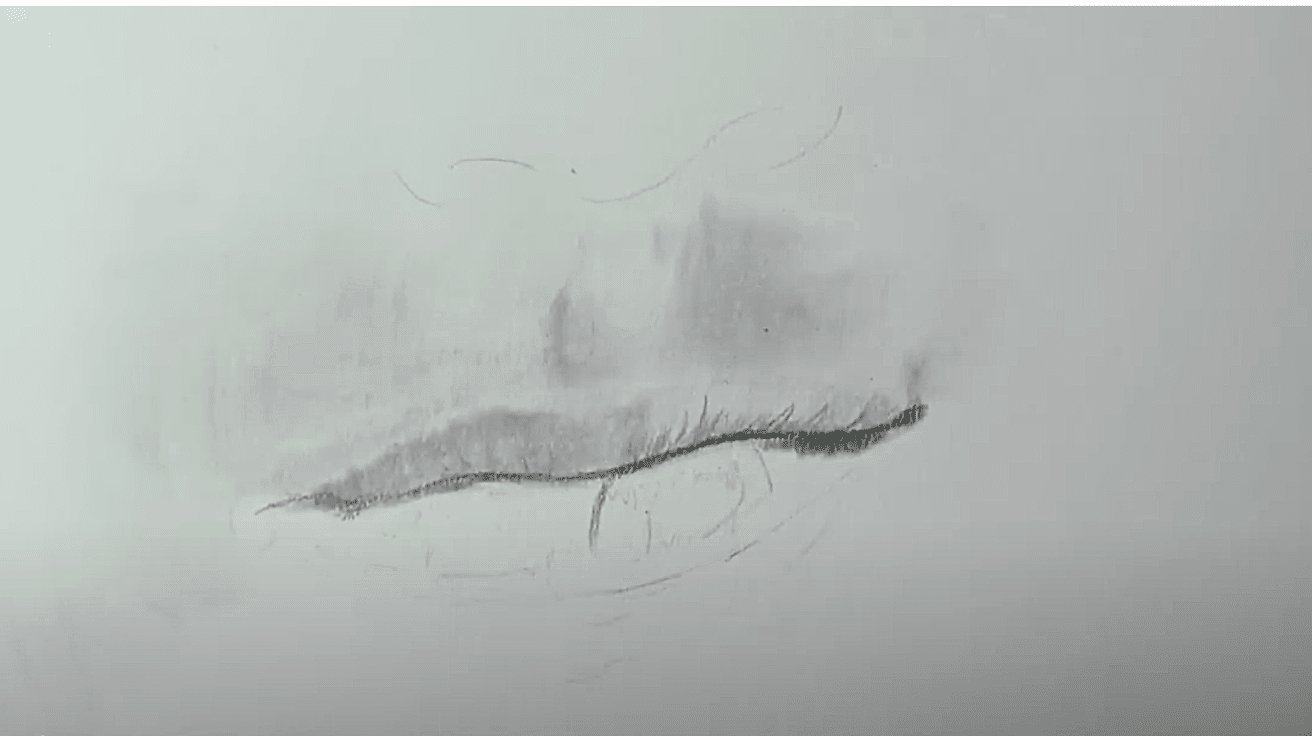
One of the most important anchors when learning to draw a realistic mouth is the central crease, the line where the upper and lower lips meet.
This line should be darkest in the middle and gradually fade outward toward the corners of the mouth. It’s not a straight, rigid line like you’d see in cartoons.
Instead, observe the natural ridges, dips, and curves unique to each person. These subtle variations help you capture character and realism in your portrait.
4. Balance Shadows Thoughtfully
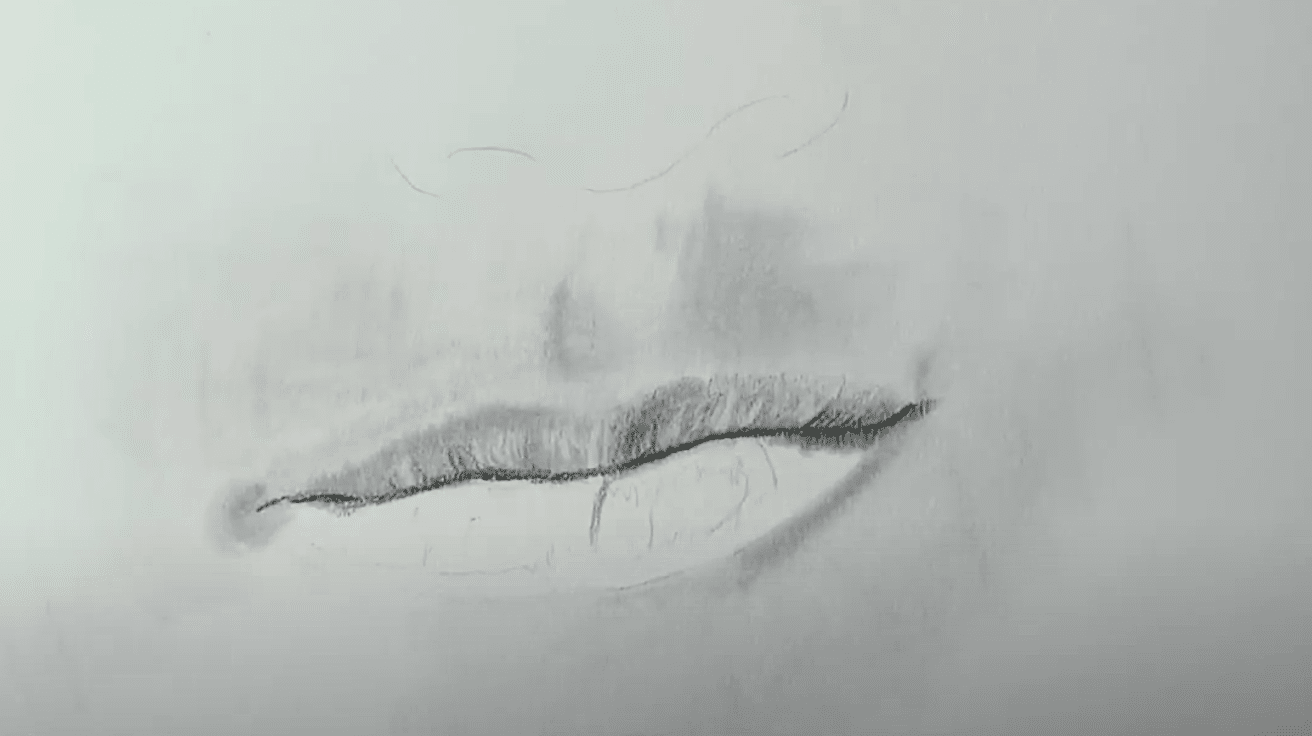
Shadow placement plays a vital role in drawing a realistic mouth that feels anchored and dimensional.
- The upper lip usually appears darker because it faces downward and falls into shadow.
- The lower lip, catching more light, should be rendered lighter.
- Add a subtle shadow right beneath the bottom lip; it makes the mouth look naturally embedded into the face.
These small tonal differences bring your drawing to life with subtle realism.
5. Follow the Lip Creases
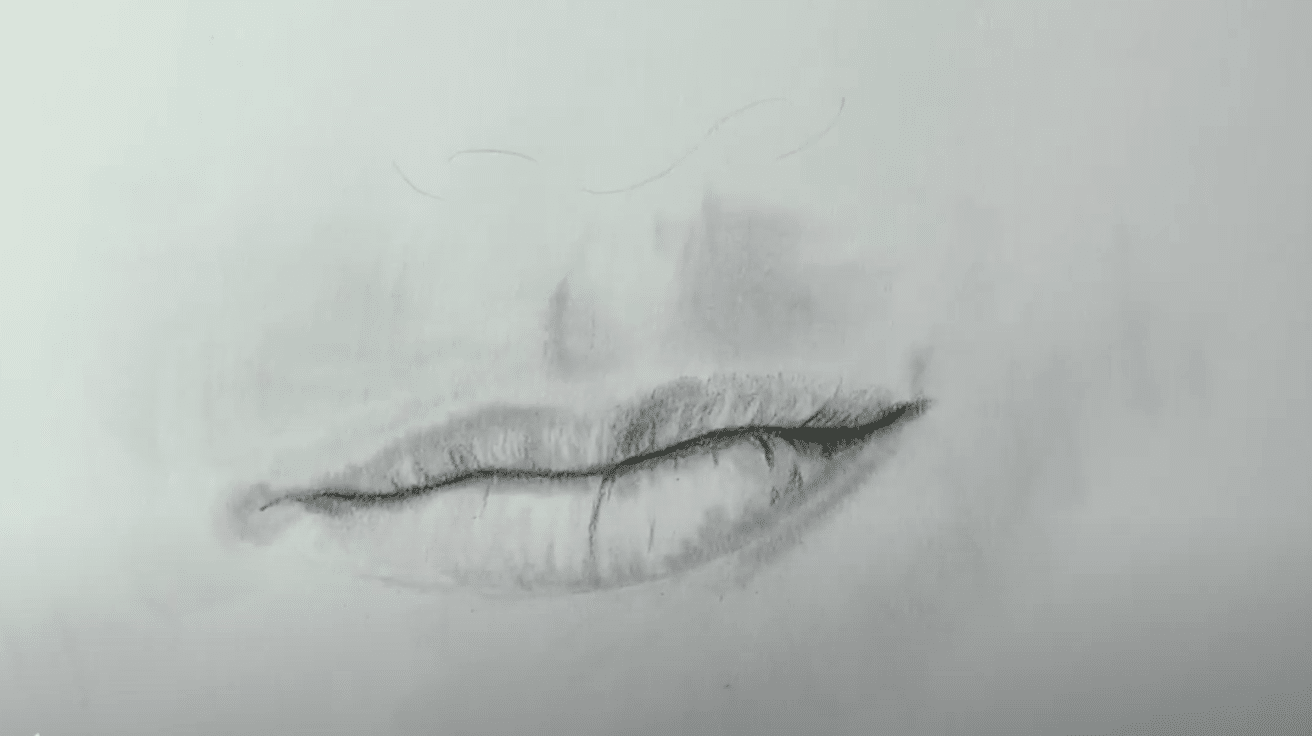
Lip creases add texture, but drawing them as random or straight lines disrupts realism. To truly capture a realistic mouth, follow the gentle arcs that radiate from the center.
These curved lines should differ slightly on each side of the mouth, enhancing natural asymmetry and giving your portrait a soft, original finish.
6. Work in Gentle Layers
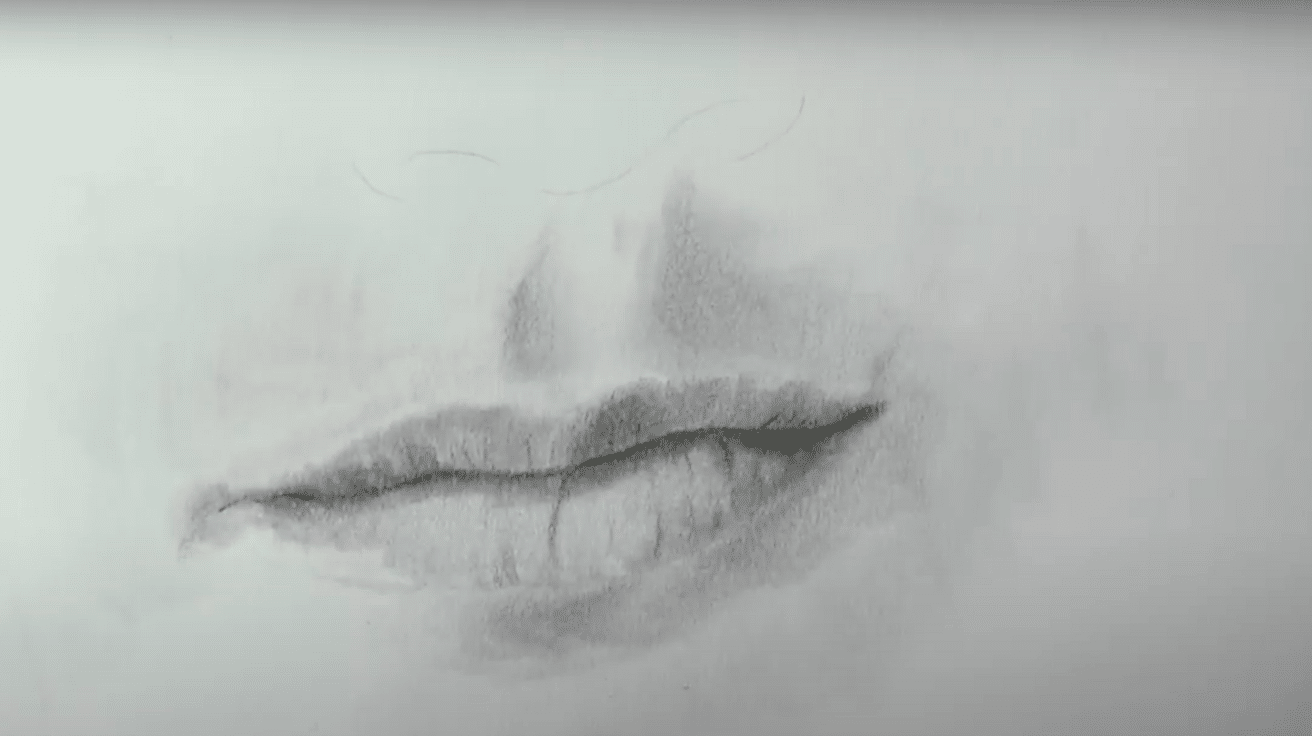
A key technique in drawing a realistic mouth lies in your layering process. Begin with the lightest of touches soft strokes to sketch out your basic shapes and shadows.
From there, build your tones gradually, moving from faint lines to deeper shading as needed. This gentle progression allows you to correct or refine your work without overcommitting too soon.
Layering not only helps you maintain control over the drawing but also brings a lifelike softness and natural depth to the lips.
Blending is not just smoothing it’s how to draw a realistic mouth that captures softness and structure all at once.
7. Highlight the Surrounding Skin
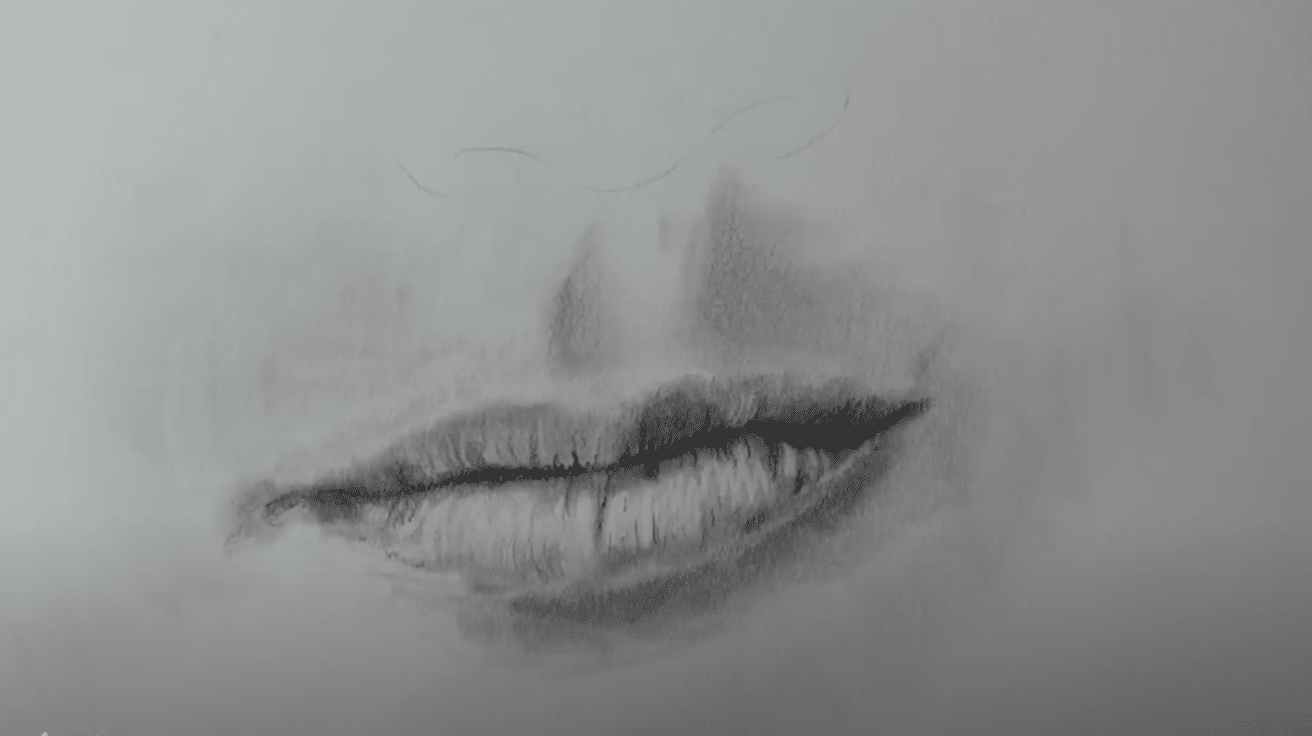
In the experience of learning how to draw a realistic mouth, it’s easy to focus solely on the lips and forget the skin around them. But this surrounding area is essential.
Add a subtle highlight just above the upper lip and a soft shadow below the lower lip to create depth and separation. These tonal shifts make the lips feel integrated into the face rather than floating on top of it.
Paying attention to these small highlights and shadows gives your work a gorgeously finished look.
9. Watch for Gender Cues
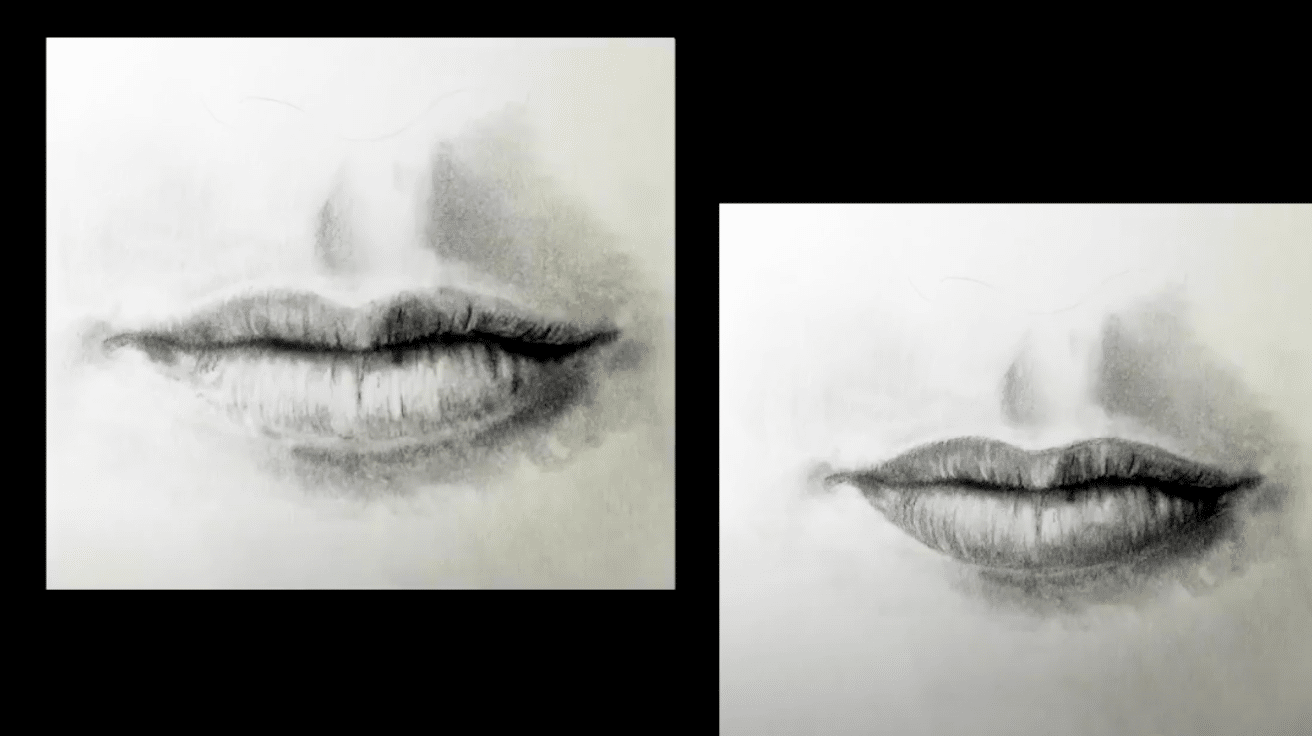
Understanding gender cues is essential in drawing a realistic mouth that fits your subject’s identity.
- Heavier lip shading or overly sharp outlines can unintentionally feminize a male mouth.
- Simply darkening the lips or refining the edges can make them appear more like they’re wearing lipstick.
- Stick to softer, broken outlines for a more masculine effect.
Being aware of these details keeps your portrait true to its intended character.
Fresh and Inspiring Ideas for Drawing Realistic Mouths
Sometimes, drawing the same thing over and over can feel a bit dull. If you’re looking to keep your sketches fun and creative, trying new ideas can help a lot.
Below are some fresh and inspiring ideas that can make practicing how to draw a realistic mouth more enjoyable and exciting.
Different Emotion
Mouth with Piercings
Side View of A Mouth
Zoomed-In Lips Only
Pair the Mouth with An Object
Final Thoughts
Drawing a mouth that looks real takes practice and patience. The techniques shown here offer a starting point for artists at any skill level.
When trying to learn how to draw a realistic mouth, remember that observation matters most. Study real lips in different expressions and lighting conditions.
Small details make the biggest difference – the slight curve where lips meet, the subtle shadows beneath the lower lip, and the texture variations across the surface. These elements bring life to your artwork.
Everyone develops their own approach to how to draw a realistic mouth over time. The methods shared in this guide aren’t rigid rules but helpful guidelines.
Artists who keep practicing will naturally develop their personal style while maintaining anatomical accuracy.
Trust the process, accept mistakes, and keep drawing.















